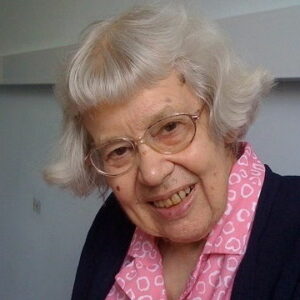Mary Lyon was an American education activist who is renowned for her dedication to ensuring that women may get higher education at an affordable price. She made efforts to assist less fortunate students in enrolling at seminary because she was fully aware of the socioeconomic divide in society. She founded two institutions in Massachusetts: the Mount Holyoke Female Seminary in South Hadley and the Wheaton Female Seminary in Norton. The Mount Holyoke Female Seminary’s first principal, Mary Lyon, held the position for twelve years. The Mount Holyoke Female Seminary’s rapid growth opened up new avenues for women’s education. She demonstrated both the financial viability of a women’s seminary and the equality of women’s educational potential. Her students and a large number of others around the world adopted her vision and philosophy for the advancement of women and easy access to higher education. She served as an inspiration to those who founded women’s institutions, such as “Smith College,” “Mills College,” and “Wellesley College.”
Early Childhood & Life
On February 28, 1797, Mary Mason Lyon was born in the hilly Massachusetts village of Buckland to Aaron and Jemima Lyon. When Mary was five years old, her father Aaron passed away.
She grew up learning a variety of crafts, including baking, cooking, sewing, canning food from the family garden, making candles, churning butter, jam, and cheese, and helping her mother with household tasks.
She attended the village school for her elementary education, and when it moved, she was forced to stay with her family or locals during the school year to pay for her boarding by doing various jobs.
She supported her brother, who looked after the 100-acre family farm, when she was 13 and her mother left the house and remarried. As weekly pay, he gave her one silver dollar.
She attended a variety of district schools until she was 13 years old before beginning to teach there in 1814.
She attended the “Sanderson Academy” in Ashfield in 1817, where her interest in science grew. After 1817, she worked as both a teacher and a student. She alternated between attending lectures and teaching all the time. To pay for her children’s schooling and boarding, she used to make blankets and trade them.
She studied in Massachusetts at “Sanderson Academy,” “Amherst Academy,” and “Byfield Female Seminary,” in addition to “Sanderson Academy.”
Although she was raised as a Baptist, she eventually changed her religious affiliation to Congregationalist after being influenced by her instructor, Reverend Joseph Emerson.
Career of Mary Lyon
She began instructing in the schools she had attended in 1814. She worked at several institutions, including her own Anderson School in Buckland and two Grant-run institutions, Adams Female Academy and Ipswich Female Seminary.
She conducted a review of other institutions outside of New England in 1833 with the goal of founding a reasonably priced institution for women to pursue higher education. She collected money from neighbors door to door for three years to reach her endowment goal of $30,000. The male town officials of South Hadley gave a donation of $8,000 to charity.
She aided Laban Wheaton and Eliza Baylies Chapin Wheaton, Laban’s daughter-in-law, in Norton, Massachusetts, as they answered the call to create the Wheaton Female Seminary, now known as Wheaton College. She created the first course of study with the goal of keeping it on level with the curriculum of universities for men.
On April 22, 1835, the “Wheaton Female Seminary” opened its doors to fifty pupils and three teachers. Mary Lyon selected Eunice Caldwell to be the college’s first president. Later, Eunice Caldwell, Lyon, and eight college students departed to found the “Mount Holyoke Female Seminary.”
She officially founded “The Mount Holyoke Female Seminary” in 1836 with the goal of granting higher education to women from various socioeconomic origins, particularly those from the middle class and less fortunate backgrounds. In September 1837, it was inaugurated. The school initially had 80 students, but the enrollment grew over time. It was renamed “Mount Holyoke College” in 1895.
She was named the school’s first principal and served in that capacity for 12 years. Compared to other women’s colleges, she made the school’s curriculum more difficult. High academic standards were followed when administering the entrance examination.
She ensured that every student studied math and science while attending “The Mount Holyoke Female Seminary,” where she once took chemistry lessons. For the pupils, field tours and talks by distinguished scientists were organized. To draw students from various socioeconomic groups, the annual tuition rate was set at $60. In order to reduce the cost of tuition, she started the practice of having students participate actively in various tasks related to the school.
She was drawn to the concepts of self-restraint and self-denial. She joined the clergy of “New England’s New Divinity” as a fellow member. She used to deliver revival sermons at “The Mount Holyoke Female Seminary,” and she was instrumental in renewing Jonathan Edwards’ principles. She released “A Missionary Offering” in 1843.
Bigger Works of Mary Lyon
Mary Lyon founded “The Mount Holyoke Female Seminary,” which is still a model for women seeking higher education today. Mary Lyon inspired others with her unwavering commitment to helping disadvantaged women finance higher education. Numerous similar institutions were later founded in her wake.
Personal Legacy & Life
Mary Lyon passed away from erysipelas on March 5, 1849, at the age of 52, in her residence at Mount Holyoke in South Hadley, Massachusetts.
Estimated Net Worth
The estimated net worth of Mary Lyon is unknown.


